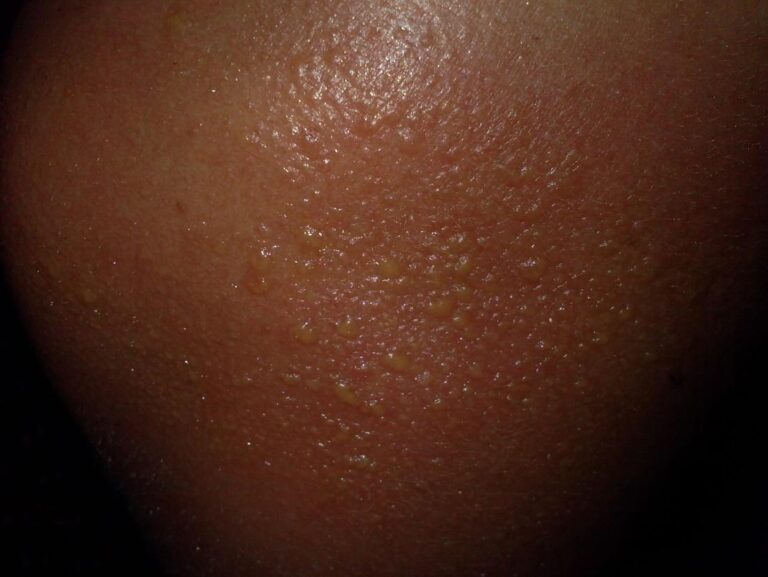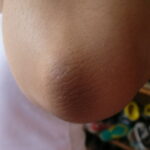Hypertension and other general health issues such as diabetes are prevalent among people with skin of color, particularly in Africans Americans. A lot of systemic medications taken for these conditions can inadvertently lead to side effects like skin reactions, particularly sun-induced.
The following systemic conditions are commonly seen in persons of African-American descent:
- Diabetes mellitus
- Hypertension
- Obesity, polycystic ovarian syndrome
- Coronary artery disease
- Metabolic syndrome
- Arthritis (osteoarthritis, rheumatoid arthritis)
One may need to be on several medications in order to treat these conditions, which often tend to coexist. This is called ‘polypharmacy’, where one needs to be on several different medications at one time.
Commonly used drugs which give rise to photosensitivity are:
- Antihypertensives mainly thiazides like hydrochlorothiazide
- ACE inhibitors and Angiotensin Receptor Blockers (ARBs) used for diabetes and hypertension. Example: captopril, losartan, telmisartan
- Calcium channel blockers such as nifedipine using for angina
- Anti-arrythmics used for heart rhythm disturbances like amiodarone, dronadarone
- Metformin used for diabetes and PCOS
- Statins used for lowering blood lipid levels. Example: atorvastatin
- Non-steroidal anti-inflammatory drugs such as ibuprofen, diclofenac, naproxen, etc. used for arthritis
Drug-induced photosensitivity occurs when these photosensitising medications cause sunburn or dermatitis (like a scaling or blistering rash) on sun-exposed skin. The areas commonly affected include the face, neck, arms, backs of hands and often lower legs and feet.
The rash can be itchy or painful. Sometimes it can even spread all over the body to involve sun-protected skin also. When it resolves, it tends to leave behind stubborn pigmentation. Rarely, they may even cause a ‘lichenoid’ reaction, where there are dark purple patches on sun-exposed skin. This condition tends to be typically stubborn to treat.
Once the suspecting drug is eliminated, the rash usually subsides within a span of a few months.
Mechanism of reactions:
When ingested orally, these drug molecules are deposited in the skin, where they react with UV rays when exposed to sunlight. This can give rise to a rash.
That is why it has been shown that strict photoprotection can actually significantly reduce the incidence of these reactions.
Prevention:
Hence, it is important to follow strict sun protection measures in order to prevent drug-induced photosensitivty reactions.
These include:
- Wearing full-sleeved shirts
- Using wide brimmed hats and sunglasses to protect the delicate facial skin
- Covering the neck areas with scarves
- Using opaque, UV protective sun clothing
- Wearing sunscreen with SPF30+ in order to minimise the UV radiation reaching the skin’s layers.
Treatment:
- Once a rash has occurred, your dermatologist will prescribe antihistamines and topical steroids to get the inflammation under control.
- You may also need to take a short course of oral corticosteroids.
- Soothing lotions like calamine lotion and aloe vera help with the itching and burning sensation.
Rarely, the photosensitive rash may be so severe that the medications may need to be discontinued. You would need to check with your physician in conjunction with your dermatologist as to what the best plan forward would be. Using a drug from a different molecular class will prevent development of any further reactions.
References:
- Korzeniowska K, Cieślewicz A, Chmara E, Jabłecka A, Pawlaczyk M. Photosensitivity reactions in the elderly population: questionnaire-based survey and literature review. Ther Clin Risk Manag. 2019;15:1111-1119. Published 2019 Sep 12. doi:10.2147/TCRM.S215308
- Zuba EB, Koronowska S, Osmola-Mańkowska A, Jenerowicz D. Drug-induced Photosensitivity. Acta Dermatovenerol Croat. 2016;24(1):55-64.
The following systemic conditions are commonly seen in persons of African-American descent:
- Diabetes mellitus
- Hypertension
- Obesity, polycystic ovarian syndrome
- Coronary artery disease
- Metabolic syndrome
- Arthritis (osteoarthritis, rheumatoid arthritis)
One may need to be on several medications in order to treat these conditions, which often tend to coexist. This is called ‘polypharmacy’, where one needs to be on several different medications at one time.
Commonly used drugs which give rise to photosensitivity are:
- Antihypertensives mainly thiazides like hydrochlorothiazide
- ACE inhibitors and Angiotensin Receptor Blockers (ARBs) used for diabetes and hypertension. Example: captopril, losartan, telmisartan
- Calcium channel blockers such as nifedipine using for angina
- Anti-arrythmics used for heart rhythm disturbances like amiodarone, dronadarone
- Metformin used for diabetes and PCOS
- Statins used for lowering blood lipid levels. Example: atorvastatin
- Non-steroidal anti-inflammatory drugs such as ibuprofen, diclofenac, naproxen, etc. used for arthritis
Drug-induced photosensitivity occurs when these photosensitising medications cause sunburn or dermatitis (like a scaling or blistering rash) on sun-exposed skin. The areas commonly affected include the face, neck, arms, backs of hands and often lower legs and feet.
The rash can be itchy or painful. Sometimes it can even spread all over the body to involve sun-protected skin also. When it resolves, it tends to leave behind stubborn pigmentation. Rarely, they may even cause a ‘lichenoid’ reaction, where there are dark purple patches on sun-exposed skin. This condition tends to be typically stubborn to treat.
Once the suspecting drug is eliminated, the rash usually subsides within a span of a few months.
Mechanism of reactions:
When ingested orally, these drug molecules are deposited in the skin, where they react with UV rays when exposed to sunlight. This can give rise to a rash.
That is why it has been shown that strict photoprotection can actually significantly reduce the incidence of these reactions.
Prevention:
Hence, it is important to follow strict sun protection measures in order to prevent drug-induced photosensitivty reactions.
These include:
- Wearing full-sleeved shirts
- Using wide brimmed hats and sunglasses to protect the delicate facial skin
- Covering the neck areas with scarves
- Using opaque, UV protective sun clothing
- Wearing sunscreen with SPF30+ in order to minimise the UV radiation reaching the skin’s layers.
Treatment:
- Once a rash has occurred, your dermatologist will prescribe antihistamines and topical steroids to get the inflammation under control.
- You may also need to take a short course of oral corticosteroids.
- Soothing lotions like calamine lotion and aloe vera help with the itching and burning sensation.
Rarely, the photosensitive rash may be so severe that the medications may need to be discontinued. You would need to check with your physician in conjunction with your dermatologist as to what the best plan forward would be. Using a drug from a different molecular class will prevent development of any further reactions.
References:
- Korzeniowska K, Cieślewicz A, Chmara E, Jabłecka A, Pawlaczyk M. Photosensitivity reactions in the elderly population: questionnaire-based survey and literature review. Ther Clin Risk Manag. 2019;15:1111-1119. Published 2019 Sep 12. doi:10.2147/TCRM.S215308
- Zuba EB, Koronowska S, Osmola-Mańkowska A, Jenerowicz D. Drug-induced Photosensitivity. Acta Dermatovenerol Croat. 2016;24(1):55-64.



